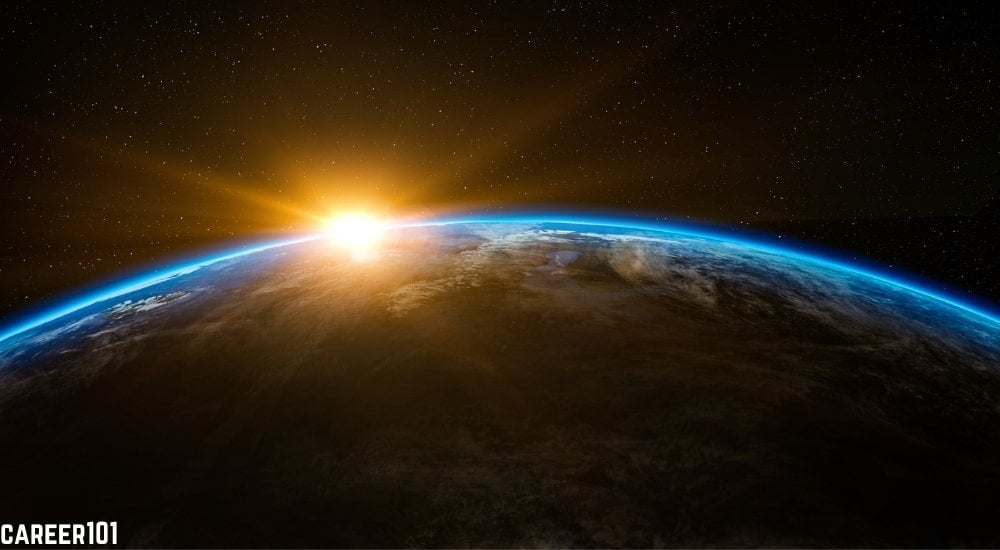Updated October 18, 2022
Anything that is endless, full of untold mystery and lies beyond your imagination is space. It is full of stars, sun, planets, galaxies, and other celestial bodies. And to dedicate everything associated with aerospace, planets, stars and their observation, National Space Day is celebrated every year on the first Friday in May. And this year, in 2023, it falls on May 5.
National space day is dedicated to the extraordinary advancements, achievements and opportunities we get through exploring and using outer space. It is celebrated to promote STEM among young people. STEM refers to science, technology, engineering and mathematics subjects. It was also initiated to make the public interested and learn more about space exploration.
History of National Space Day
The history of National Space Day starts with the beginning of the universe itself when a big bang took place and brought everything into existence. But as a matter of fact, a celebration of National Space Day was started in 1997.
The Lockheed Martin Corporation, American aerospace, arms, defense, information security, and technology corporation, hosted National Space Day for the first time in 1997. The main aim of hosting the national space day was to inform the young generation about different aerospace careers and inspire them to take an interest in space exploration. The event continued to be celebrated every year as it became popular with teachers, space enthusiasts, and aerospace workers. Further, in 2001, a former astronaut and U.S. Senator, John Glenn, tried to give it worldwide recognition by changing it into International Space Day.
Numerous scientific organizations celebrate this day with grace by organizing demonstrations, gatherings, and educational programs. If you or your kids are interested in space and space exploration and your local science museum or observatory is doing something on this day, just visit there. The event offers an excellent chance for you or your kids to learn about the wonders of the galaxy and beyond.
Space has been fascinating to us, humans, since the beginning of time. The study of celestial objects and their phenomena was first developed by the Ancient Greeks that later evolved into the science of astronomy. Before this, in early cultures, the people used to identify the different celestial objects, such as planets, stars, galaxies, etc., as sky gods and spirits.
In 1543, when Copernicus published his study on the heliocentric system, he discovered that the planets revolved around the sun and that was one of the first significant developments in astronomy. Later, Galileo Galilei became “the father of astronomy” in the 17th century by dedicating his life to studying Space. He invents various tools for observing and exploring Space. One of his prominent inventions of Galileo for astronomy was the telescope which allowed him to discover things such as the phases of Venus and the observation of Saturn’s rings and many others.
Later, in the 20th century, a race began between America and Russia to become the first to achieve big in Space. Each country attempted to become the first to send a man to the moon. And finally, the race was slowed down on July 16, 1969, when American spaceflight Apollo 11 sent astronauts Neil Armstrong, Michael Collins and Buzz Aldrin to the moon. With that achievement, Armstrong becomes the first human to ever walk on the moon’s surface.
How to Celebrate National Space Day
If you ever wondered what lies beyond the skies, you have a great chance to discover and celebrate the things associated with aerospace, planets, stars and their observation. On the eve of National Space Day, you can visit your local science museum or observatory or library to learn about space and what mystery it hides. To Celebrate this extraordinary event by expanding your knowledge, just attend the events held by schools, organizations, or groups of space enthusiasts on this day, such as exhibitions, lectures and seminars, whichever you can.
If you have an opportunity of experiencing the telescope, it can be a very realistic experience. Grab your telescope and go to an open area at night to explore the sky yourself. It would be much better if you find a remote location or a place away from the city to explore the night sky. Experience the fun and learning about space by seeing and identifying the stars, constellations, planets, and other celestial objects.
Besides telescopes, many other educational sources are available to learn about space. You can look for books, documentaries, Articles, websites, etc., which can provide you with much information about space and space exploration.
Mostly Asked Questions on Space Day
Ans:- National Space Day is celebrated every year on the first Friday of May. It was first started in 1997 by Lockheed Martin, American aerospace, arms, defense, information security, and technology corporation, with the aim to promote the STEM (science, technology, engineering, and mathematics) fields among young people.
Ans:- Senator John Glenn, a former astronaut, changed the day to National Space Day to widen its scope of celebration across the world. It was created to encourage children to be more interested in the scientific field.
Ans:- Lockheed Martin, American aerospace, arms, defense, information security, and technology corporation, created National Space Day as a one-day event in 1997. But with increasing popularity, the former astronaut and senator John Glenn expanded Space Day to International Space Day in 2001.
